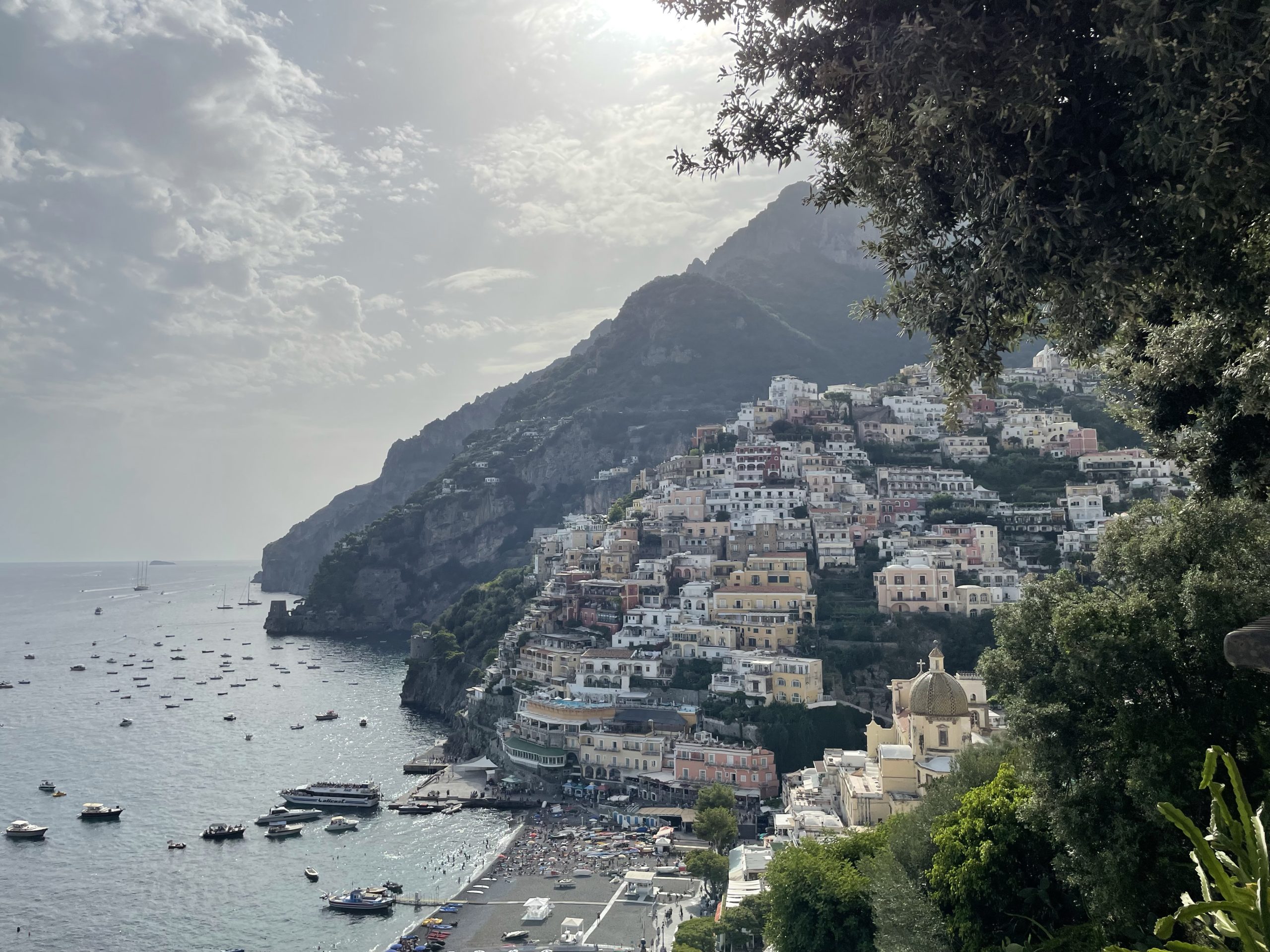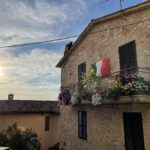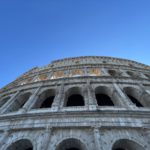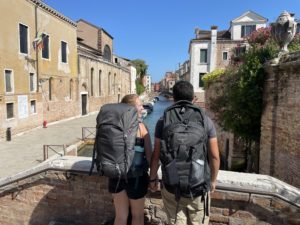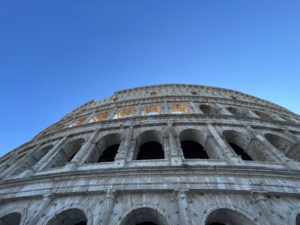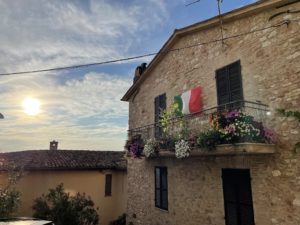August 2-5:
After the simple pleasures of the Italian countryside, we caught a train from Spello to the Naples metropolitan region – the highest populated in all of Italy. We stayed on the other side of the mountain range bordering Naples in a fast-growing city called Salerno.
Salerno
Salerno is a coastal town that sits just southeast of Naples. In between Salerno and Naples is the famous Amalfi Coast, so we thought this would be a great base of operations for us to explore the area. Salerno itself seems to have become a wonderful area to visit in its own right over the years, however. We found the city to be bustling with the international life you normally find only in large cities (we grabbed a snack at an Irish pub, and picked up some groceries at a Chinese grocery store).
While most of Salerno seems to be new and growing quickly, we set up camp in an AirBnB in the “Old Town” district of the city, about a 15 minute walk from the coast. We were fortunate enough to have a wonderful balcony overlooking Old Town and the broad sea in the distance – it was mesmerizing watching the giant cargo ships come and go into the city port at all hours of the day.
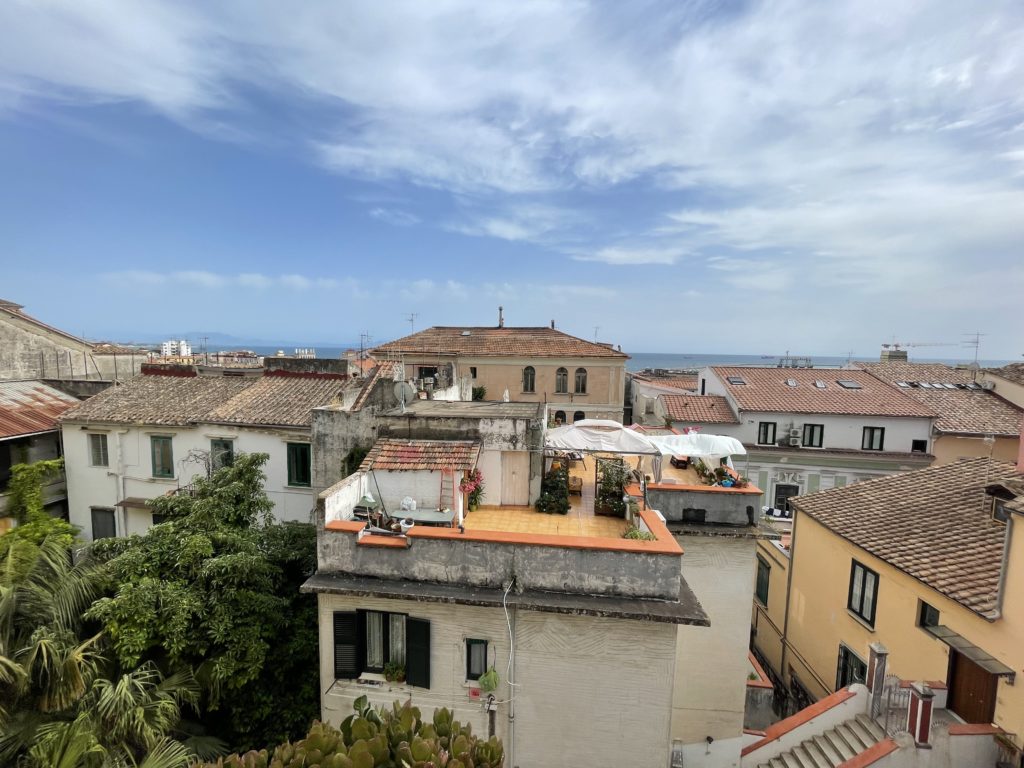
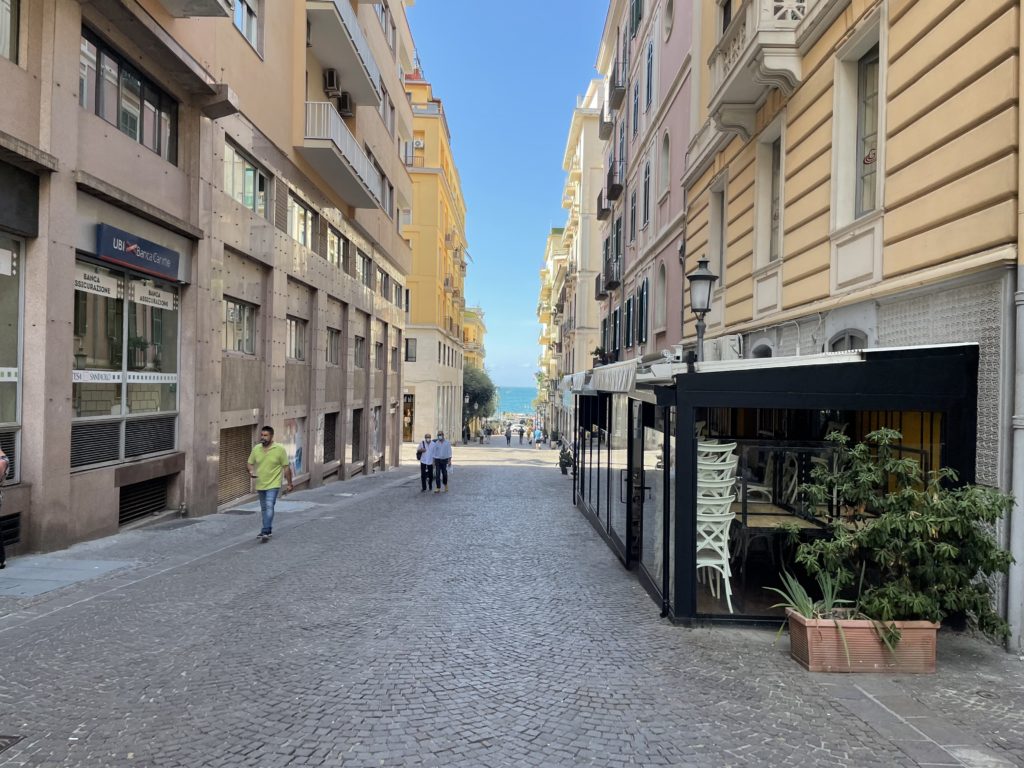
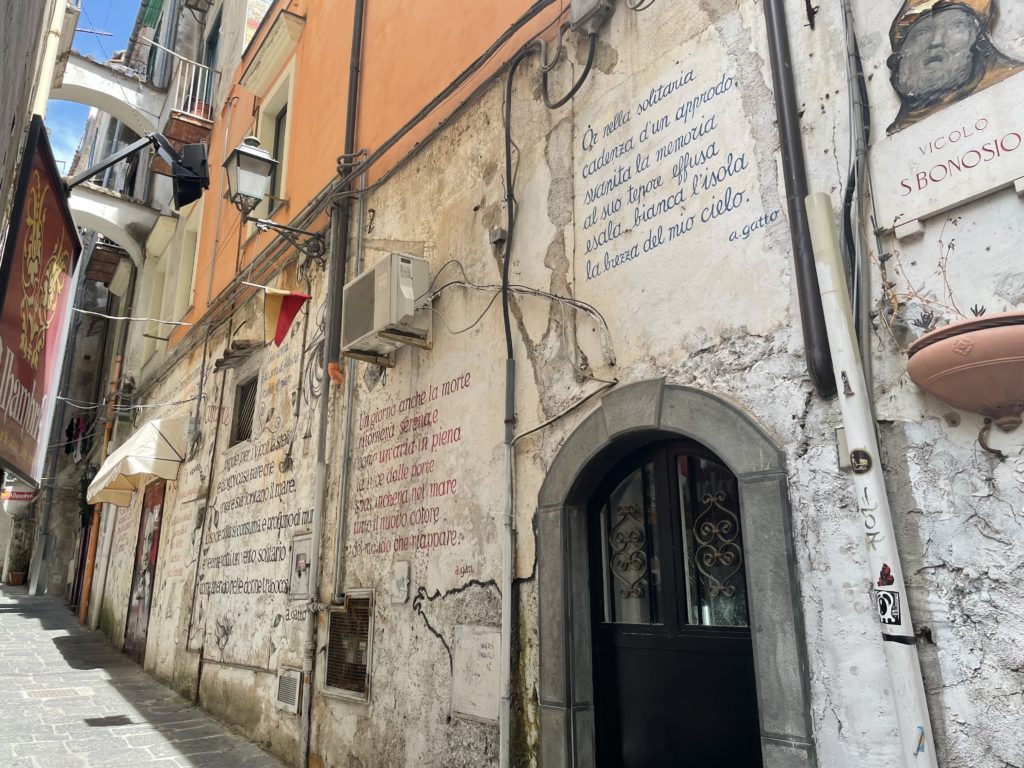
As with most parts of Italy, echoes of the Roman Empire are everywhere. On Atlas Obscura (a fun website that helps you find quirky/unique things in locations around the world), we discovered that there was an ancient Roman aqueduct just steps away from our AirBnB in Salerno!
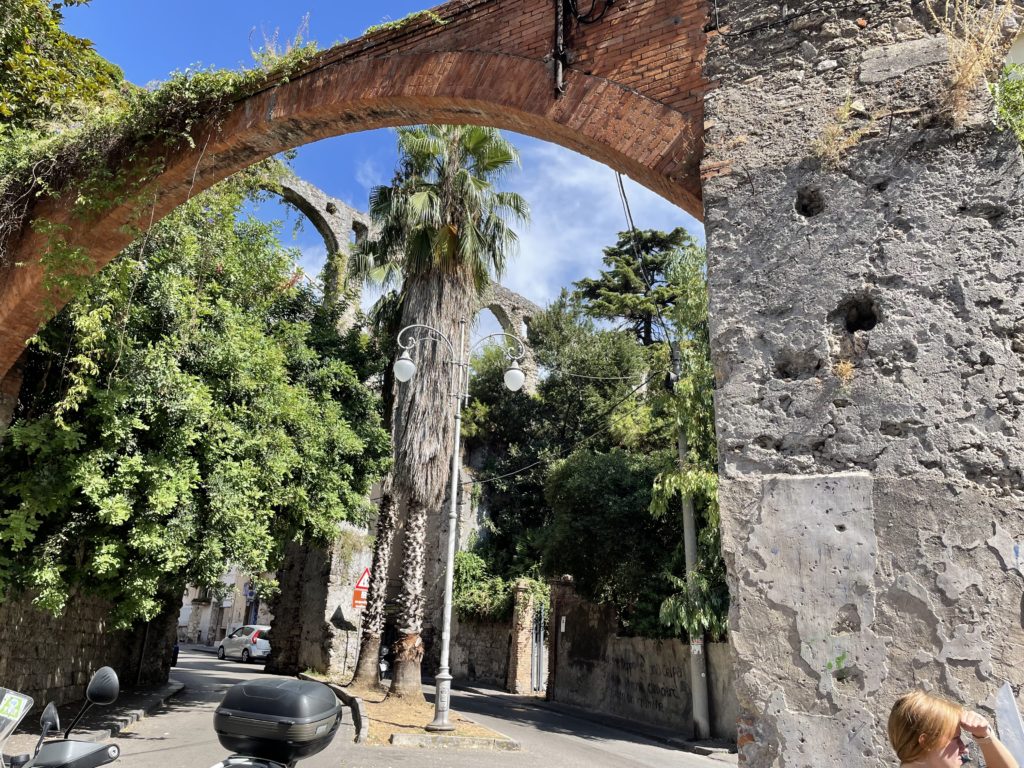
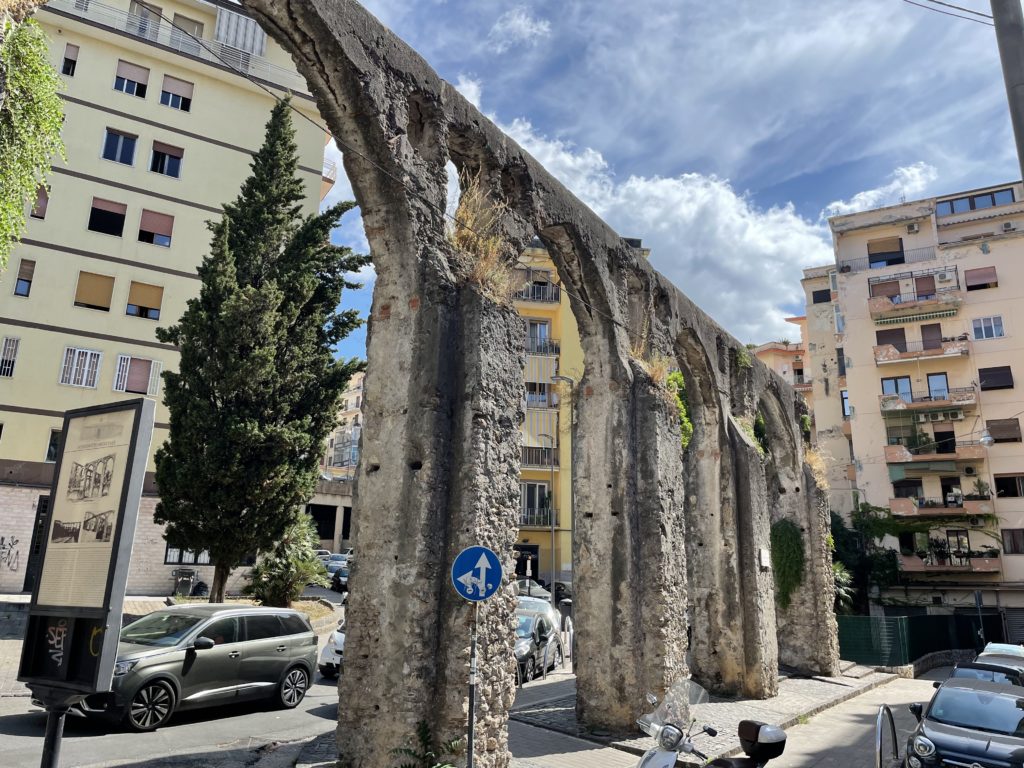
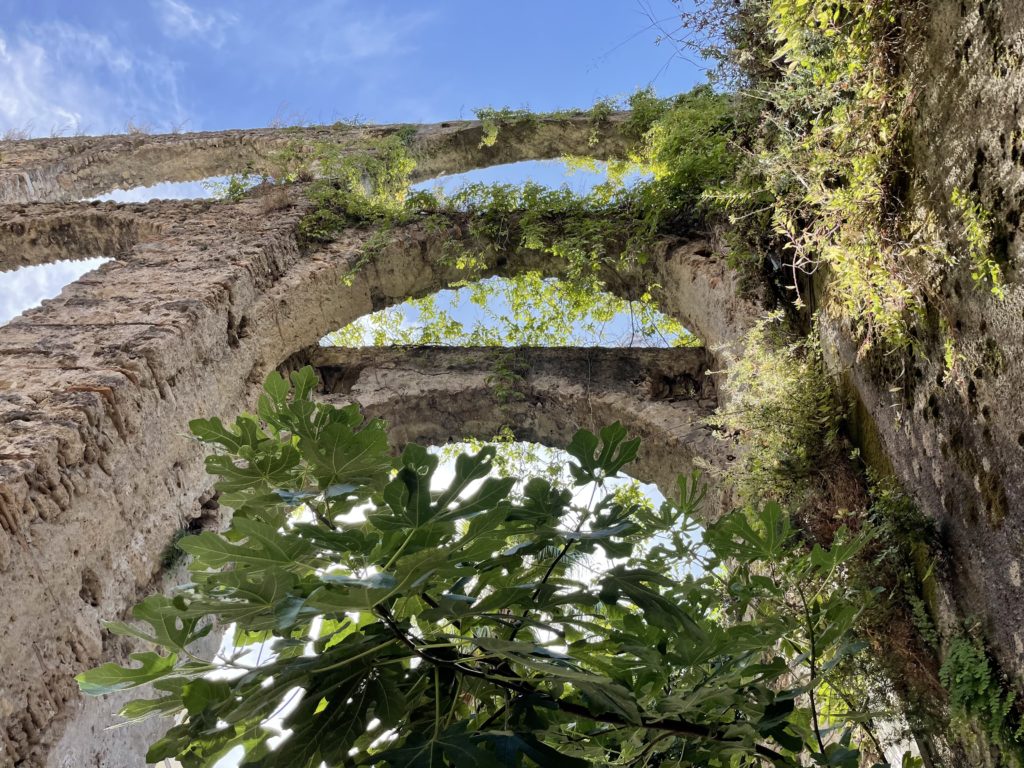
Pompeii
One of the sites that we were most excited to see in all of Italy were the ruins of the city of Pompeii. From Salerno, it was only a quick 20 minute train through the mountains to the main entrance of this ancient city.
Pompeii is what’s currently known as a typical middle-class city of the ancient Roman Empire. It was covered in hot ash from the volcanic eruption of Mt Vesuvius in 79 A.D. As such, the city was perfectly preserved for thousands of years until it was excavated. There are parts of the city that are still being excavated to this day!
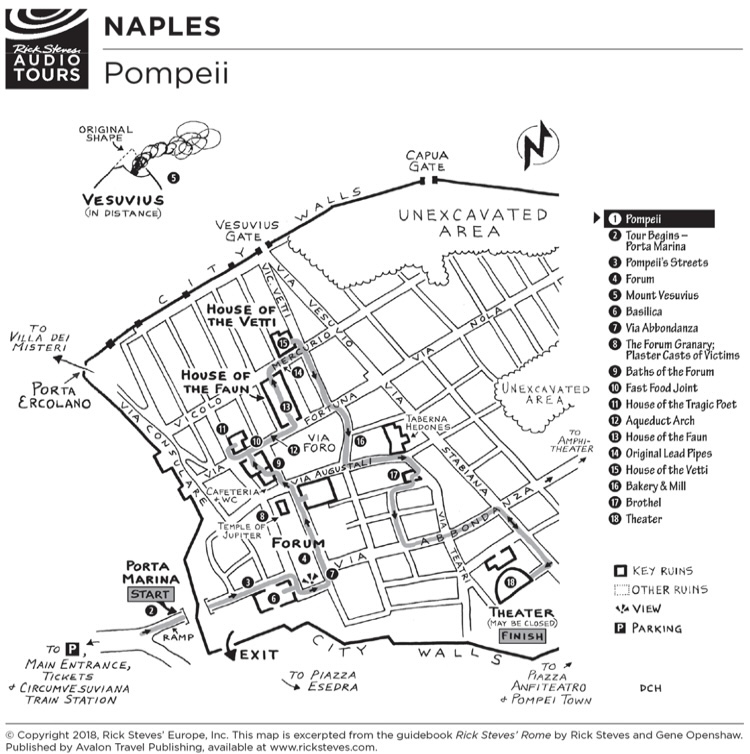
One of the things we quickly discovered about Pompeii is just how huge it is! I was expecting a few ruins here and there, but as we walked in we saw the sheer scale of the parts of the city that had been excavated. Grids, boulevards, homes, restaurants. Perfectly preserved as it was that fateful day in 79 A.D.
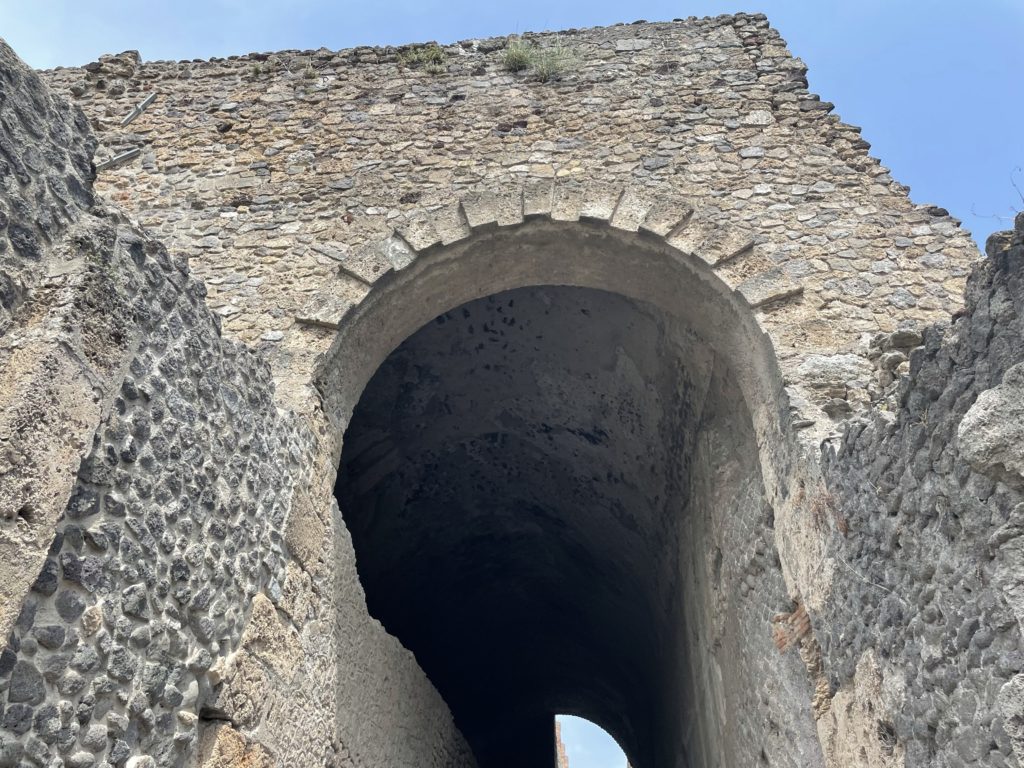
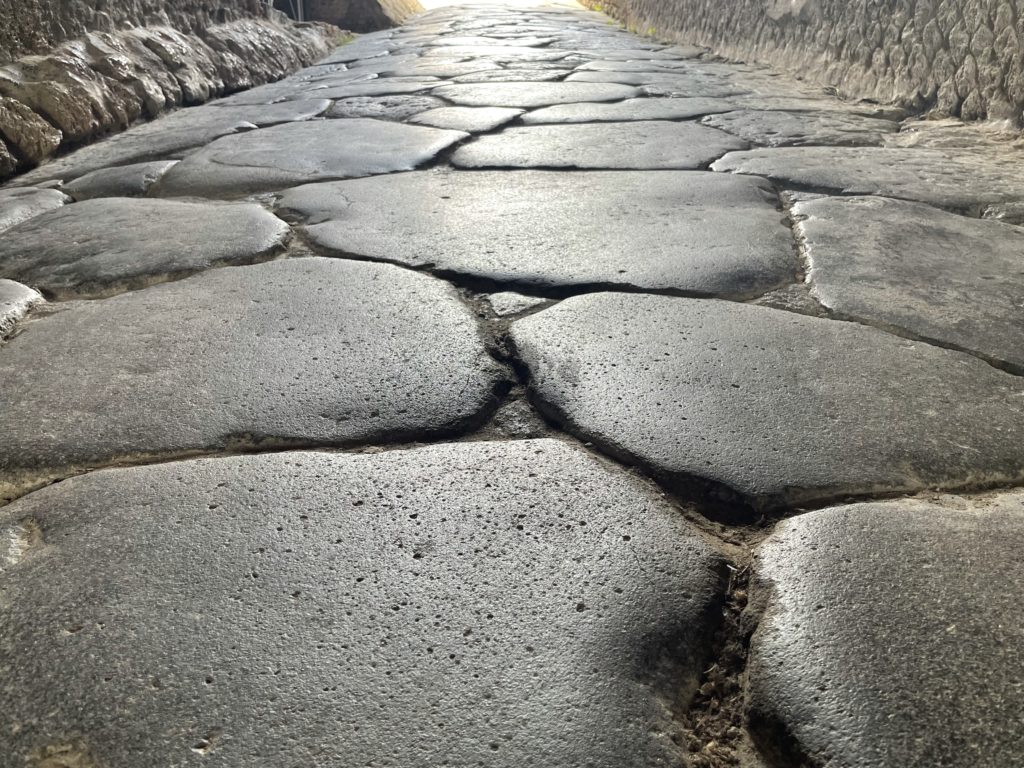
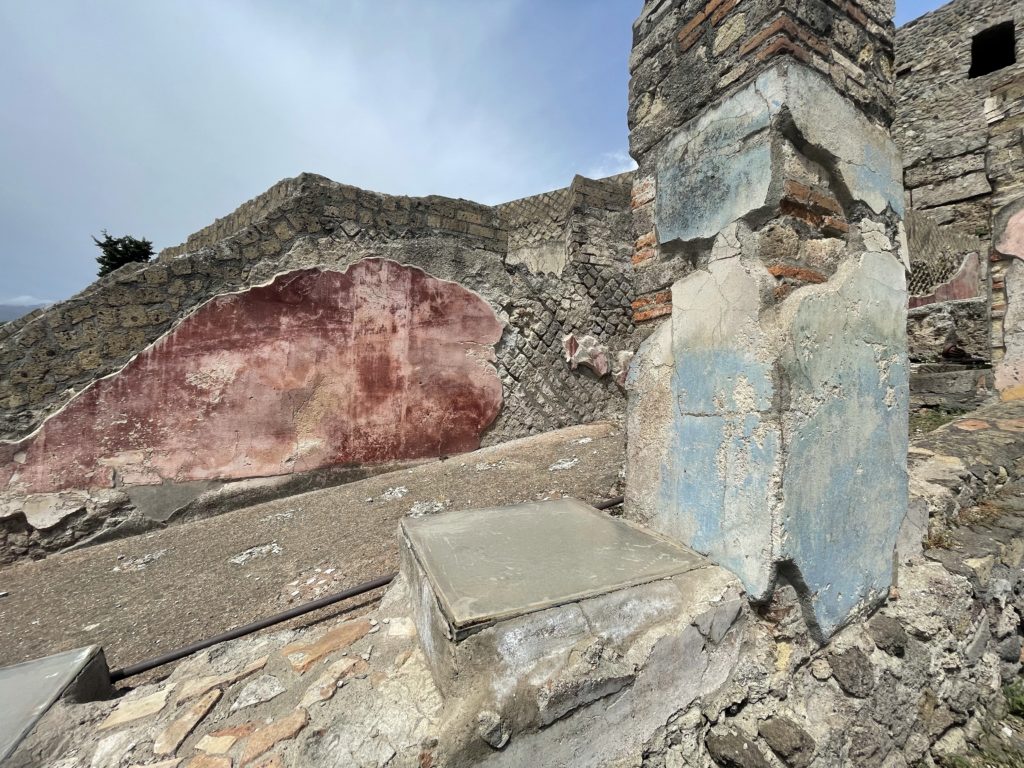
We were also struck by just how far ahead of the time the Roman Empire was during this era. The technology they created, the ideas they manifested, and the inventions that were thought up still impact our daily life today 2,000 years into the future. Pictures below document some of these things, including how the Romans used reflective material to see the sidewalk while carrying torches at night:
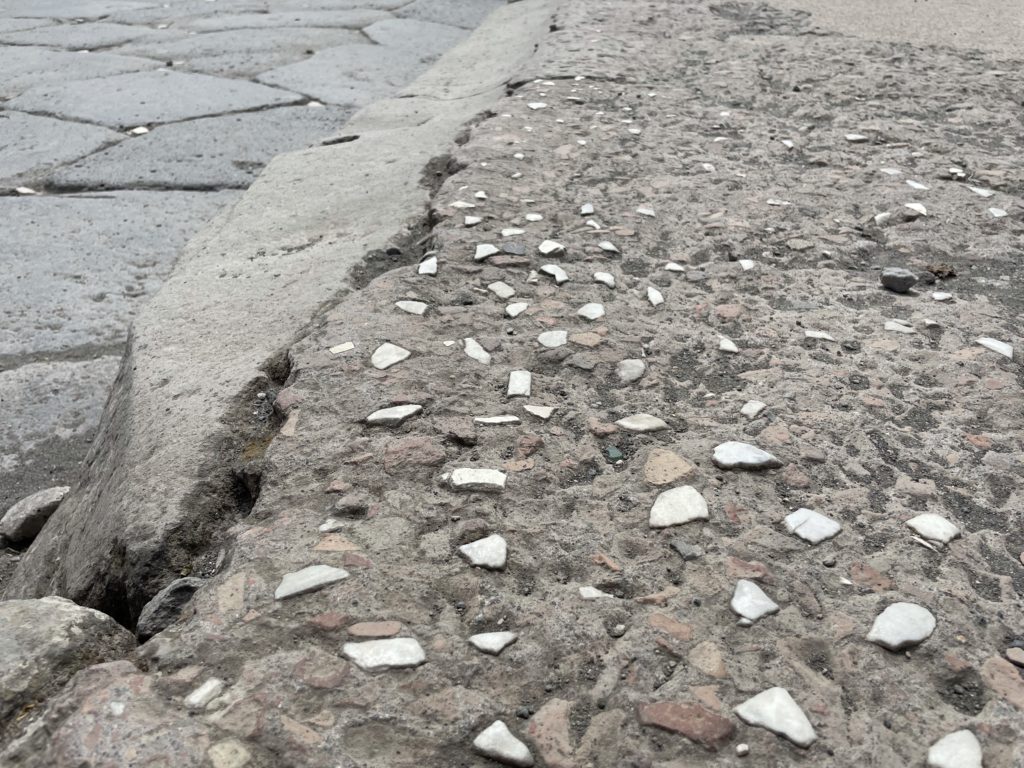
This is a fast food shop – one of many throughout the city. Yes, you read that right – fast food! The shopkeepers would put big vats of food in the openings in the counter that you see below, and customers would be quickly served a bowlful while they stood and scarfed down the food so as to not be late to meetings or ceremonies. At night, a garage-door style grate would roll down and the shop would be closed, something you still see in shops and restaurants to this day.
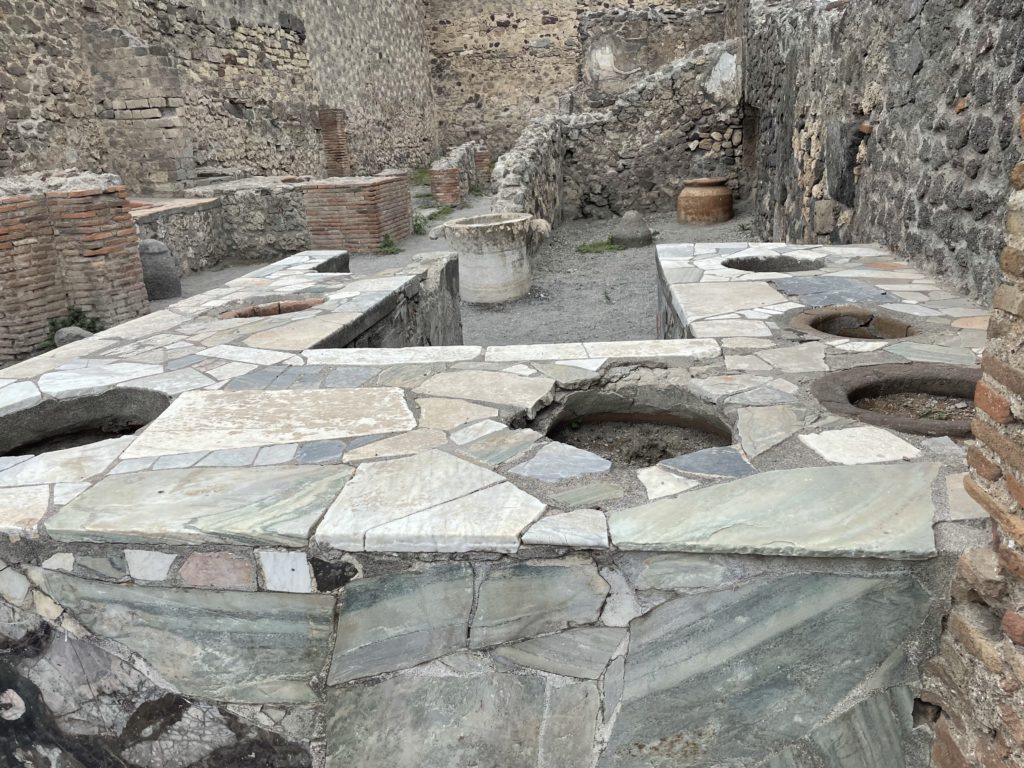
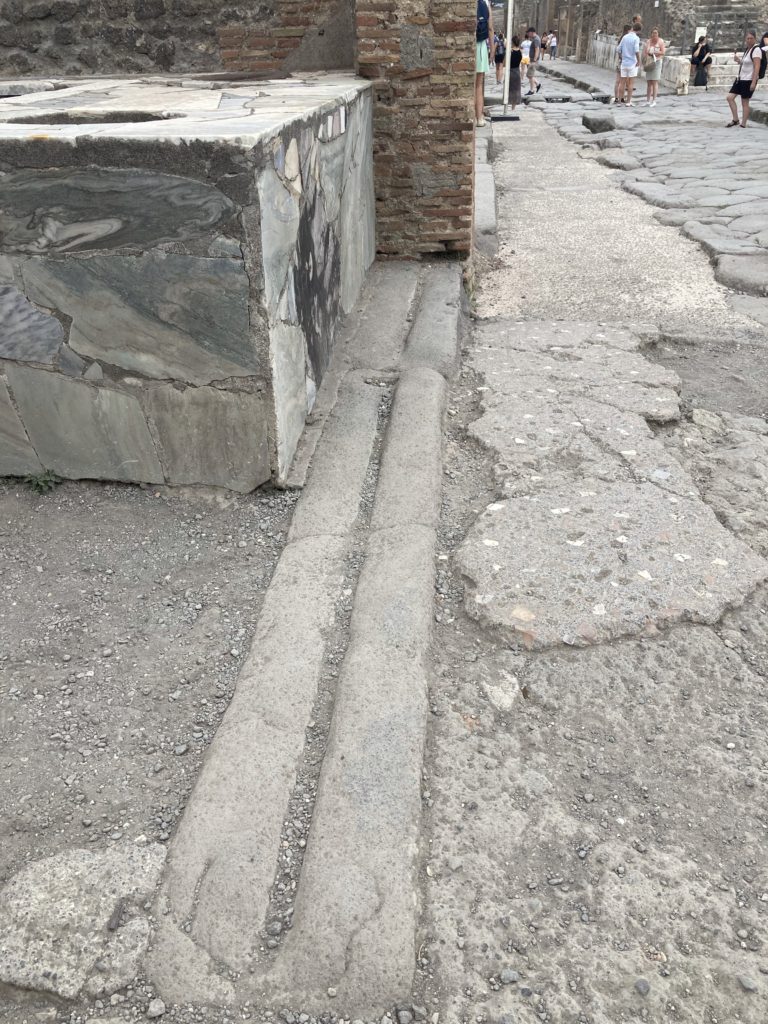
Something we found absolutely fascinating was that they figured out traffic flow systems for their busy streets. In the below picture, you notice a few things. First, the crosswalk of 3 stones. This gave a way for pedestrians to walk across the street without getting their feet wet if it rained. It also created a 2-way traffic flow for chariots as they bustled through the city. The wheels would go on either side of the stones. As you can tell in the screenshot below, heavy loads could also be dragged through and take up the whole lane – in this case leaving 2,000 year old indentions in the stone!
With these stones however, the Romans were able to designate which streets were pedestrian-only, one-way traffic, two-way traffic, or open boulevards. On the sides of the road the pedestrian sidewalks were raised up to hide the plumbing as well. Yes – plumbing in the first century. So cool!
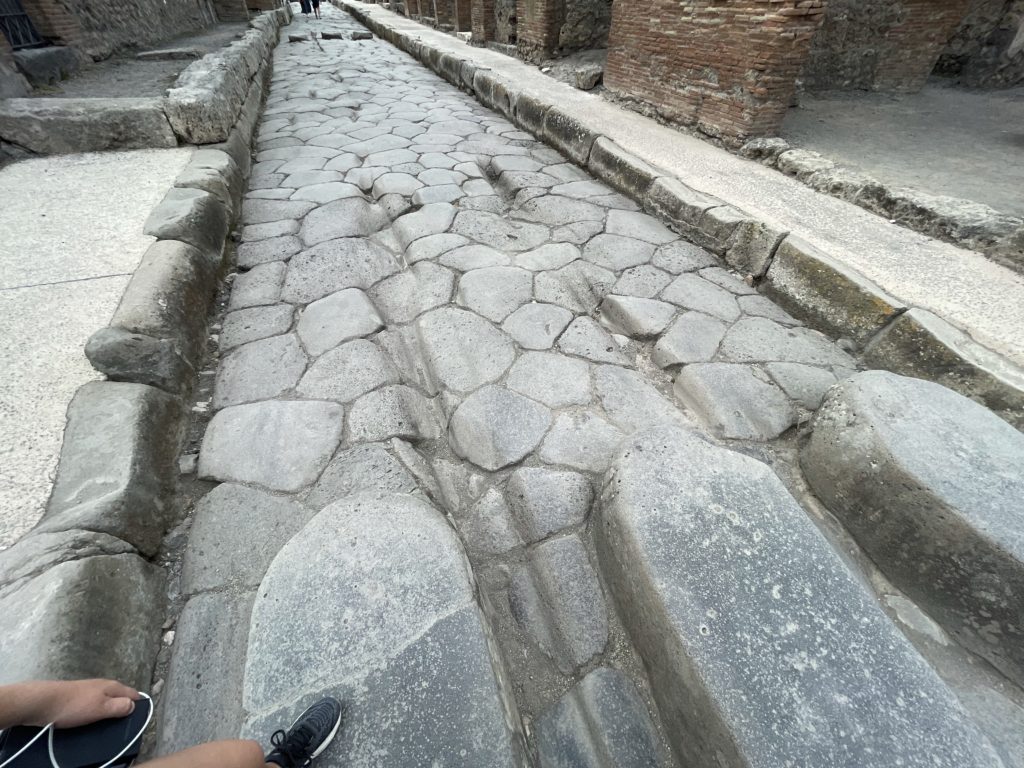
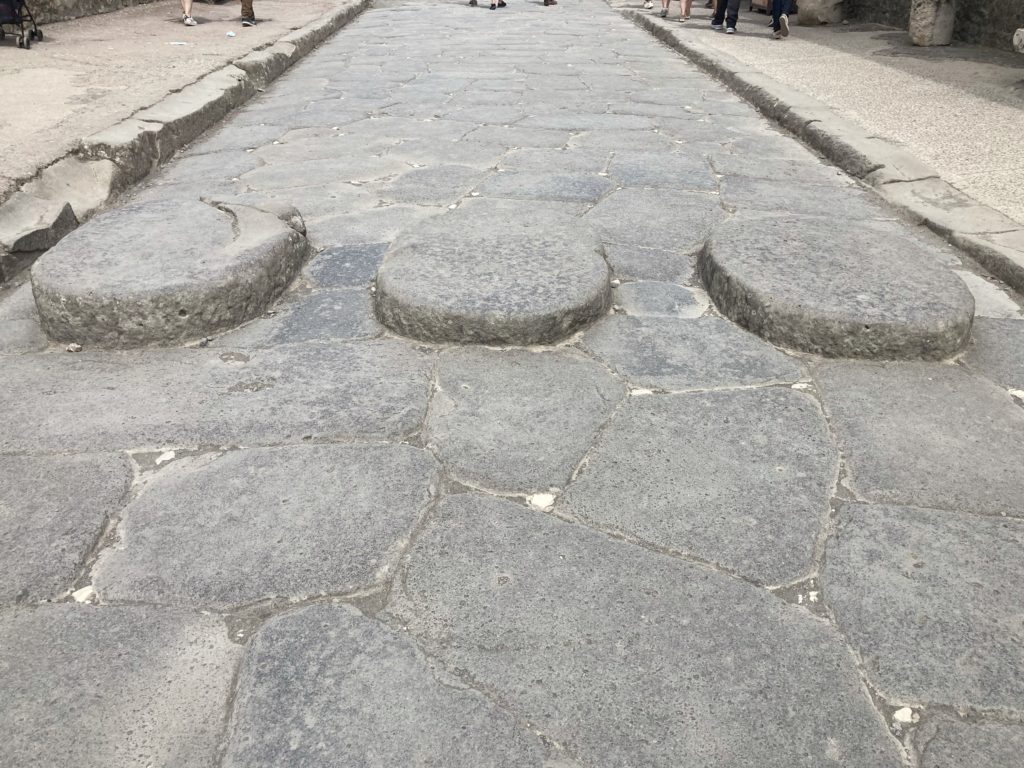
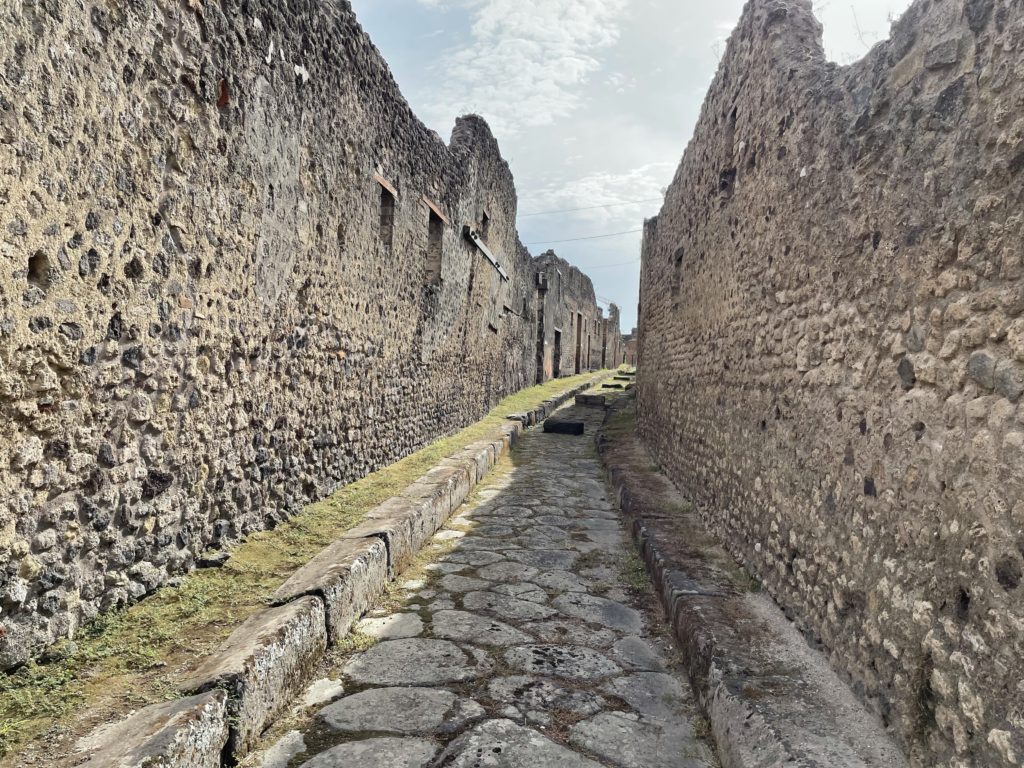
Additional Pompeii Pictures
Some more pictures of our walking tour below. We followed along with the Rick Steve’s self-guided tour, and eavesdropped here and there on passing tour groups.
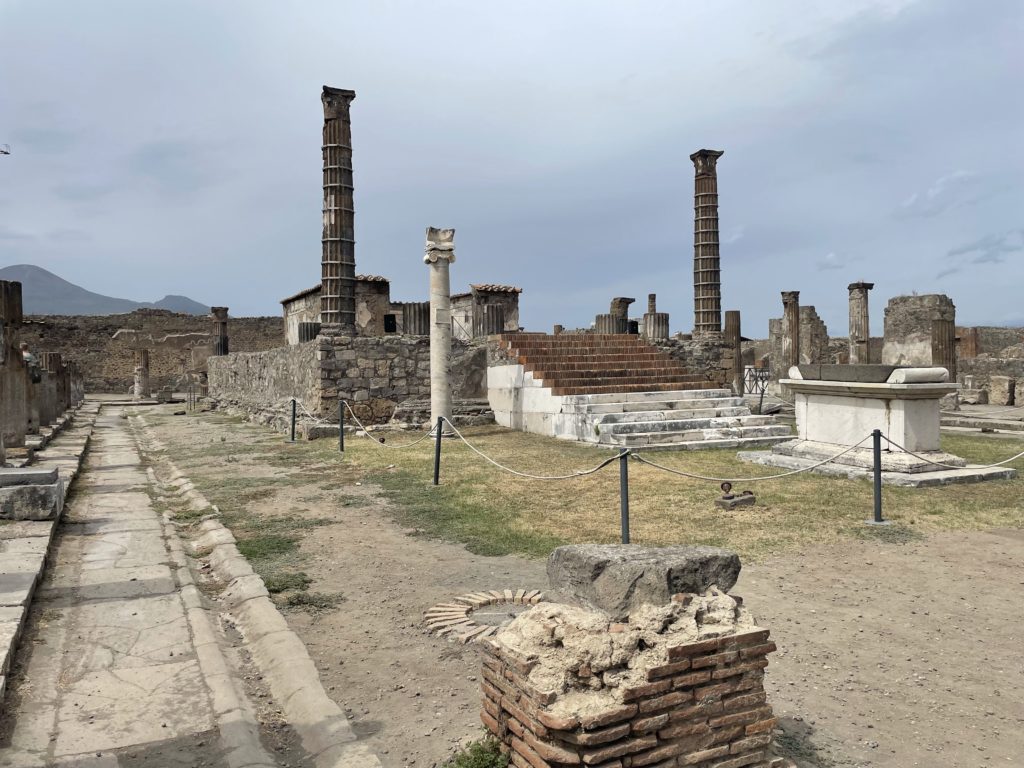
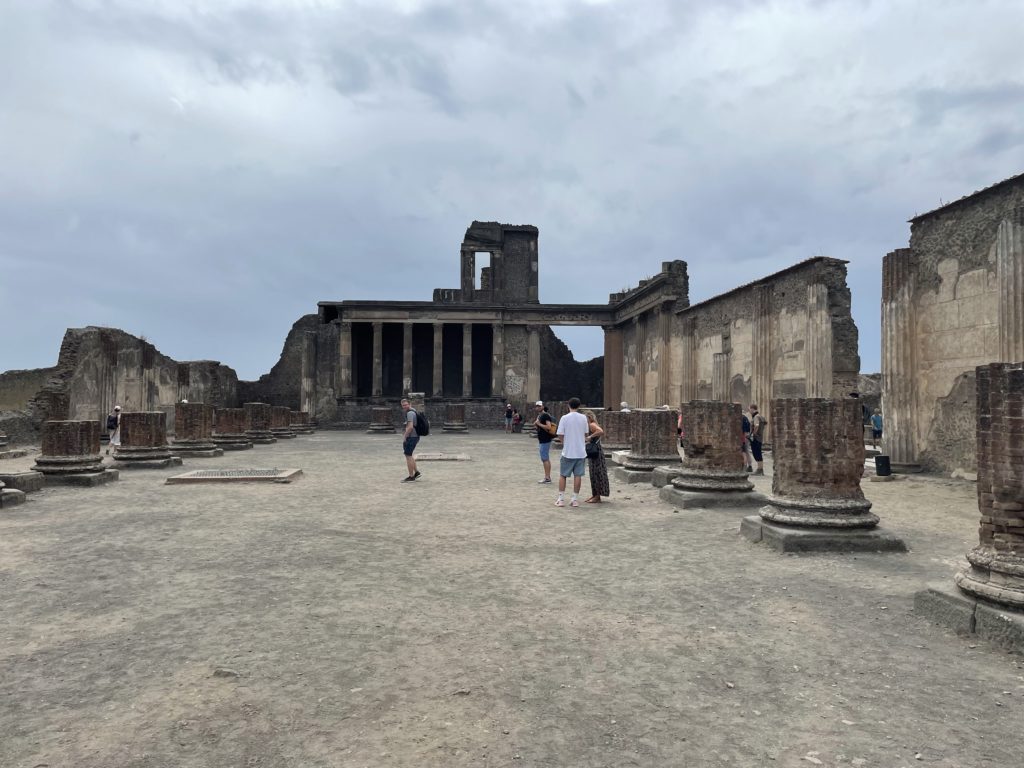
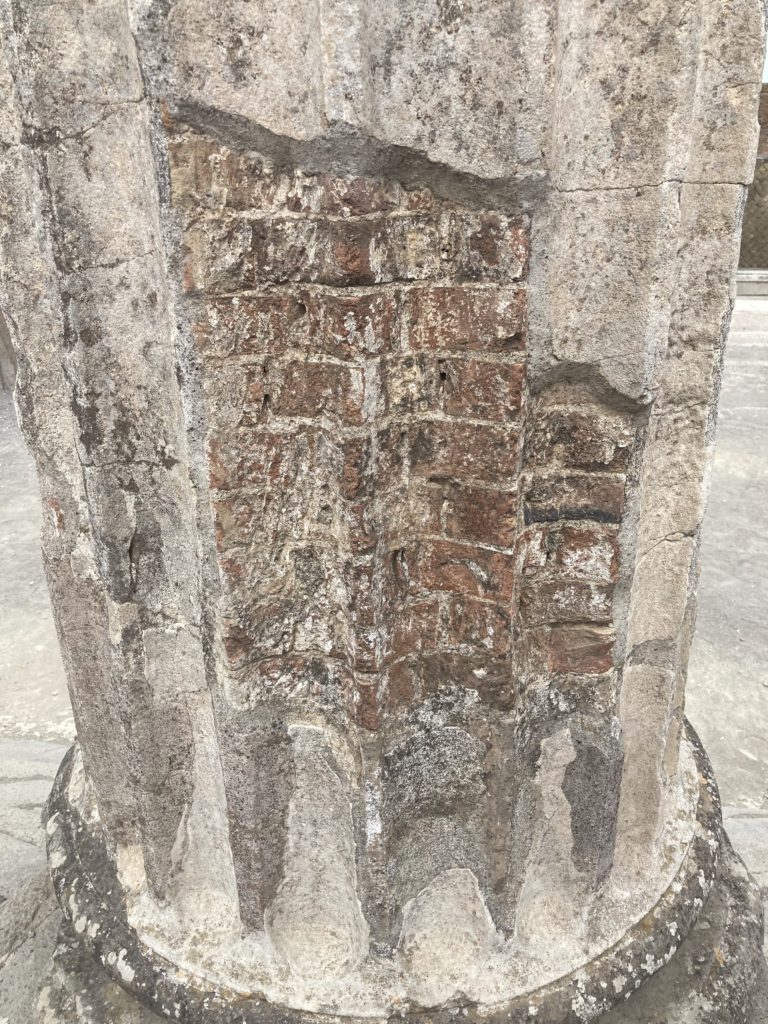
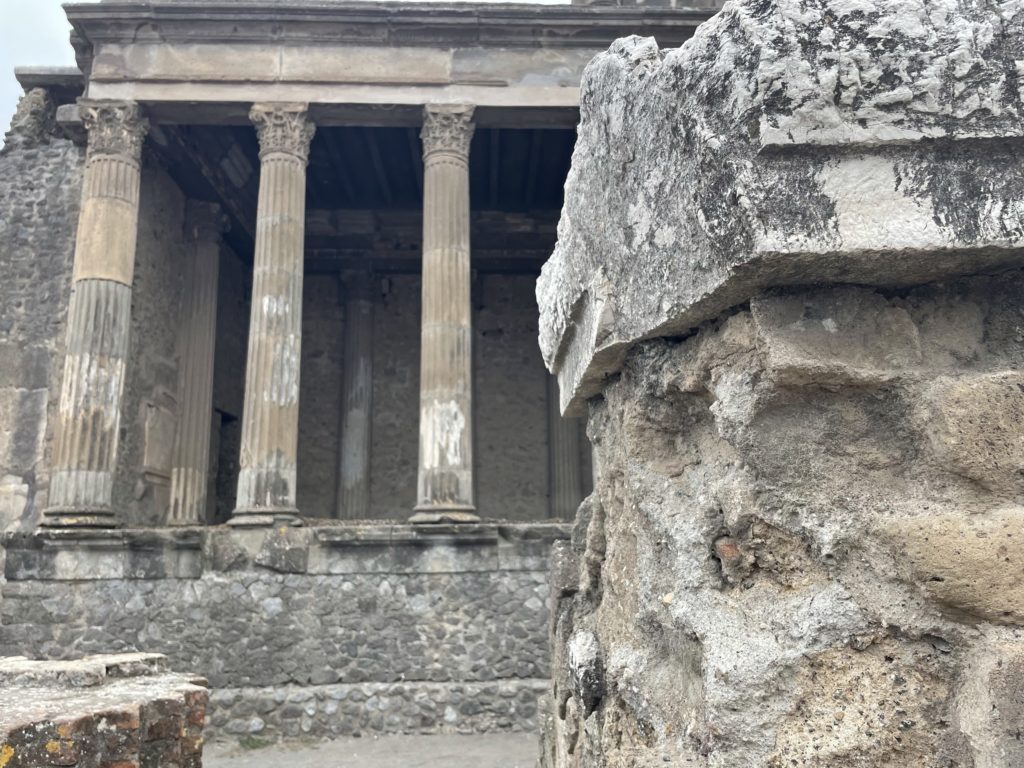
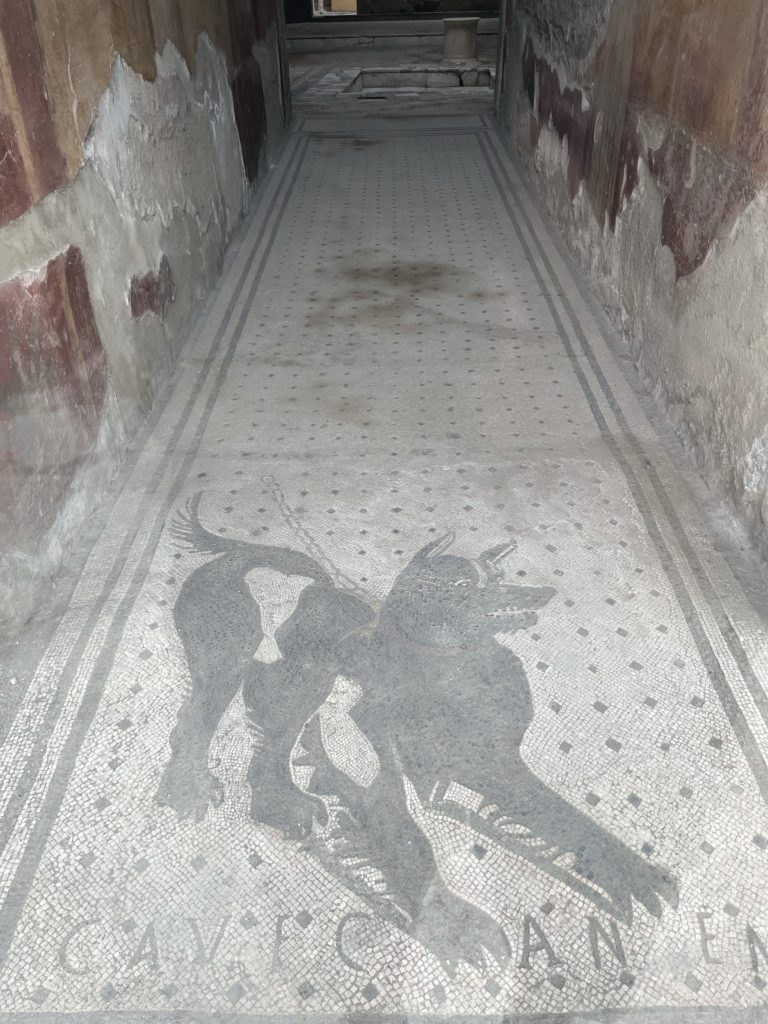
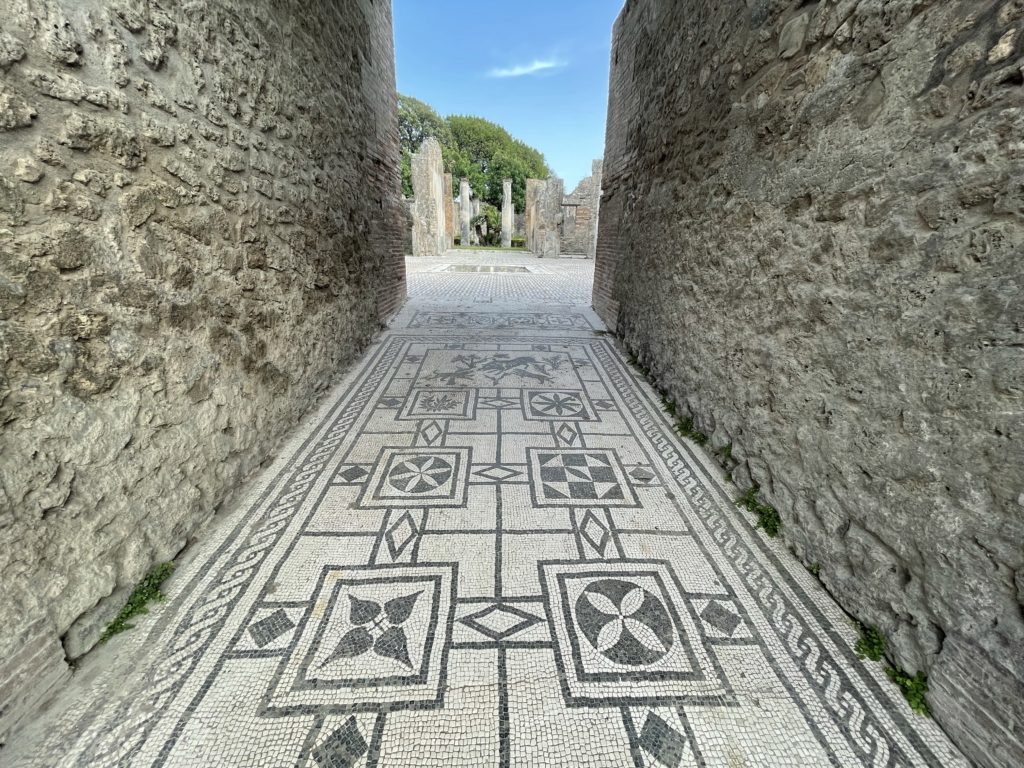
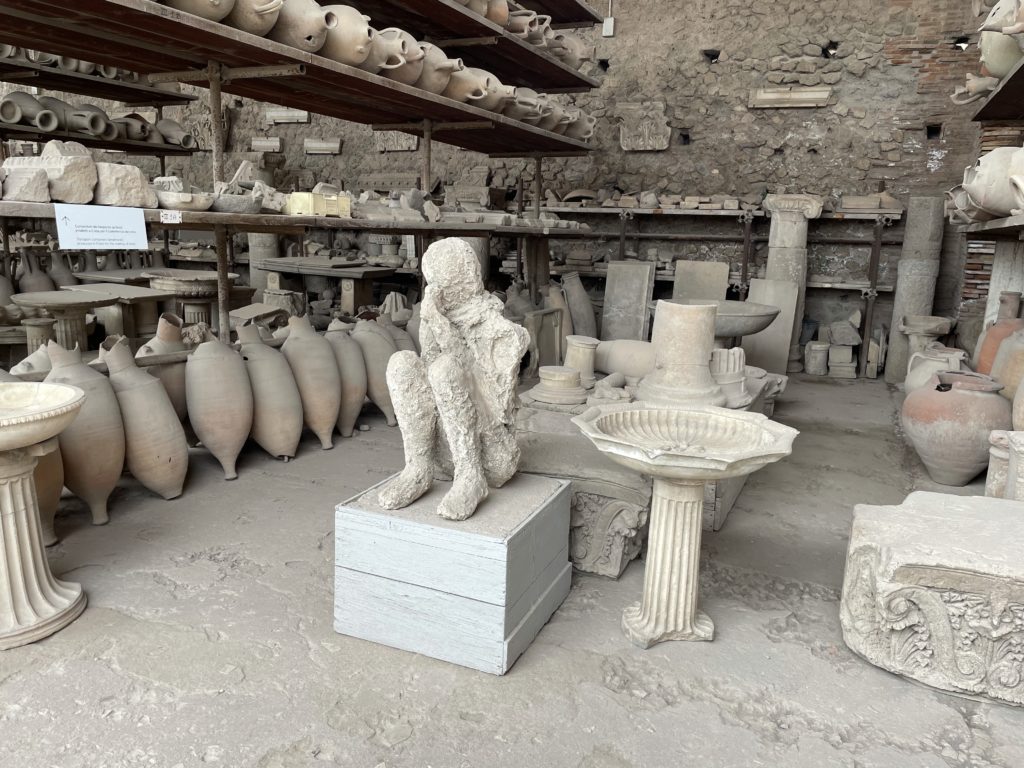
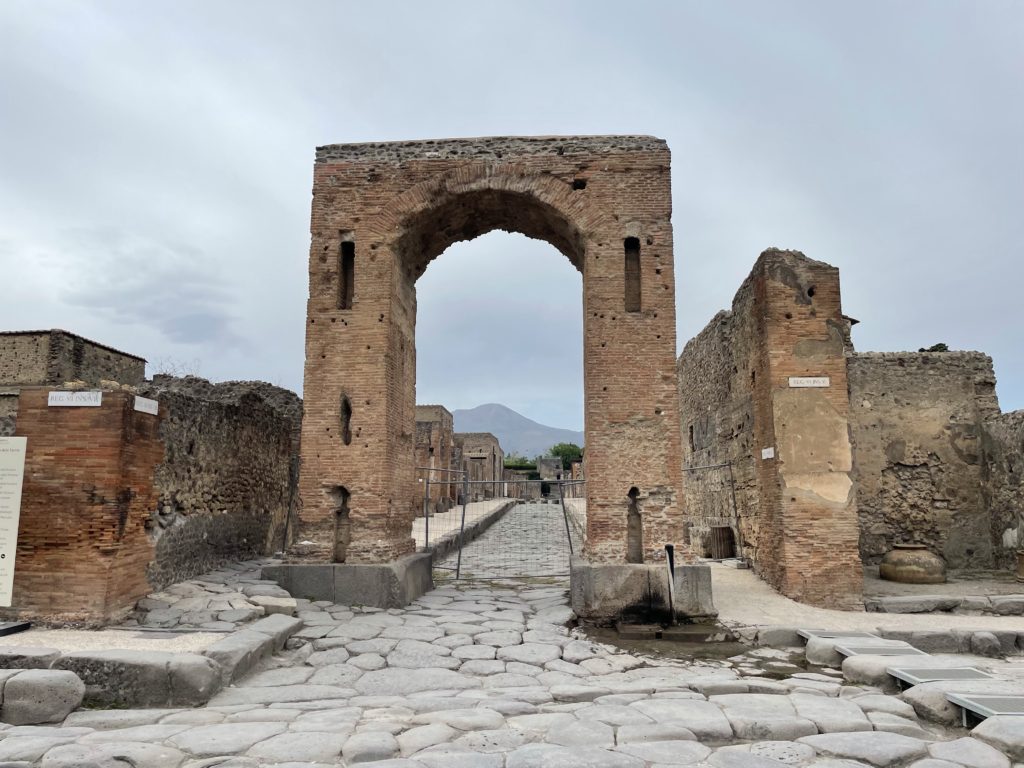
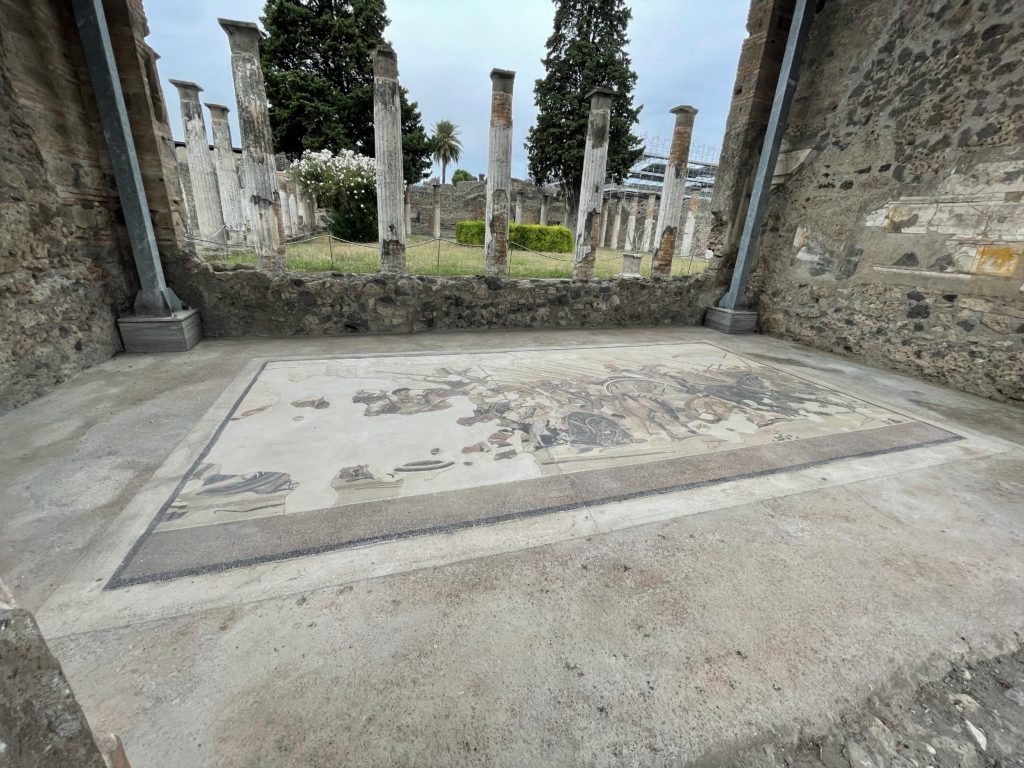
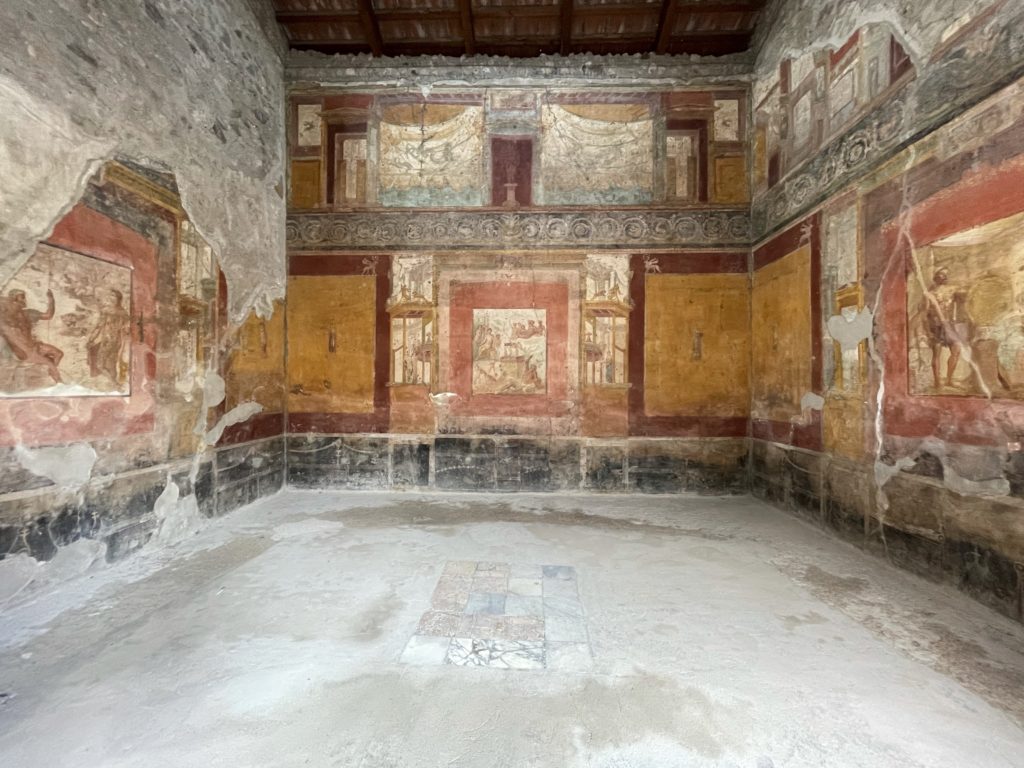
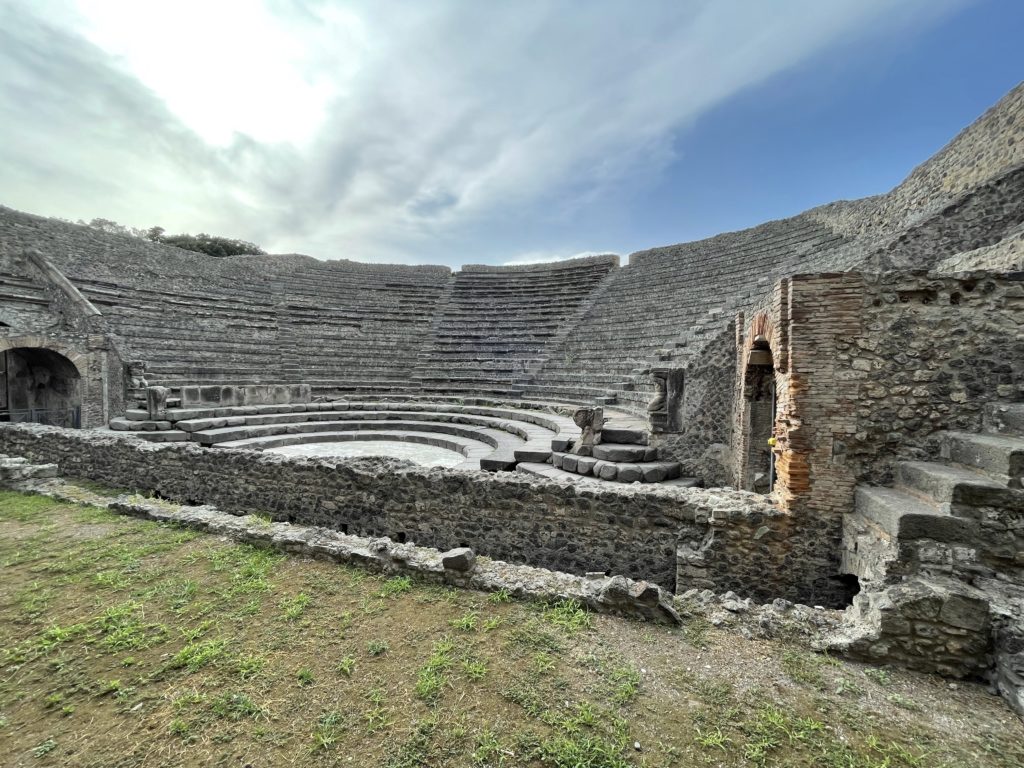
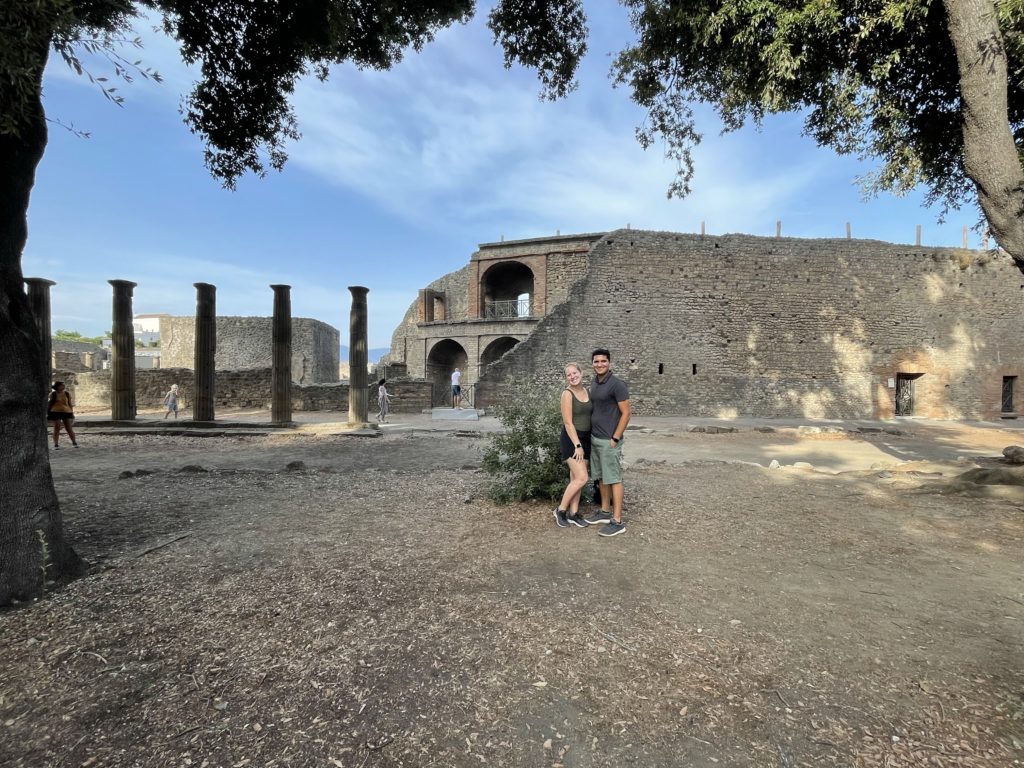
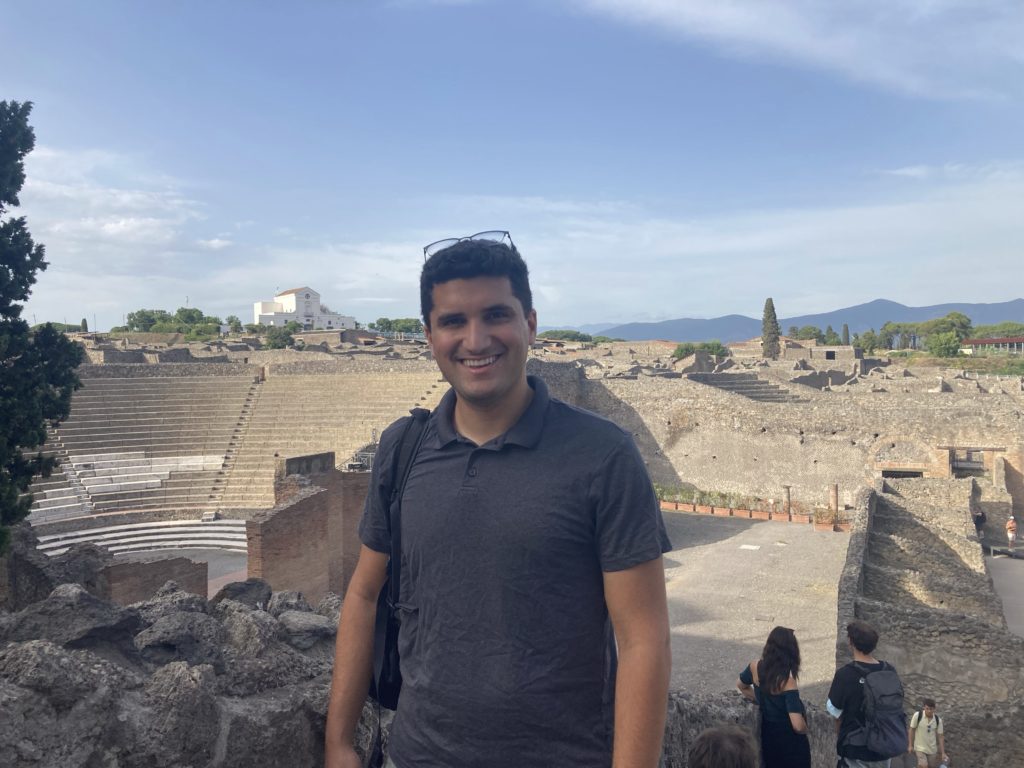
The Amalfi Coast
After Pompeii, we took a ferry from Salerno up the beautiful Amalfi coast to Positano, a picturesque town sitting directly on the coast.
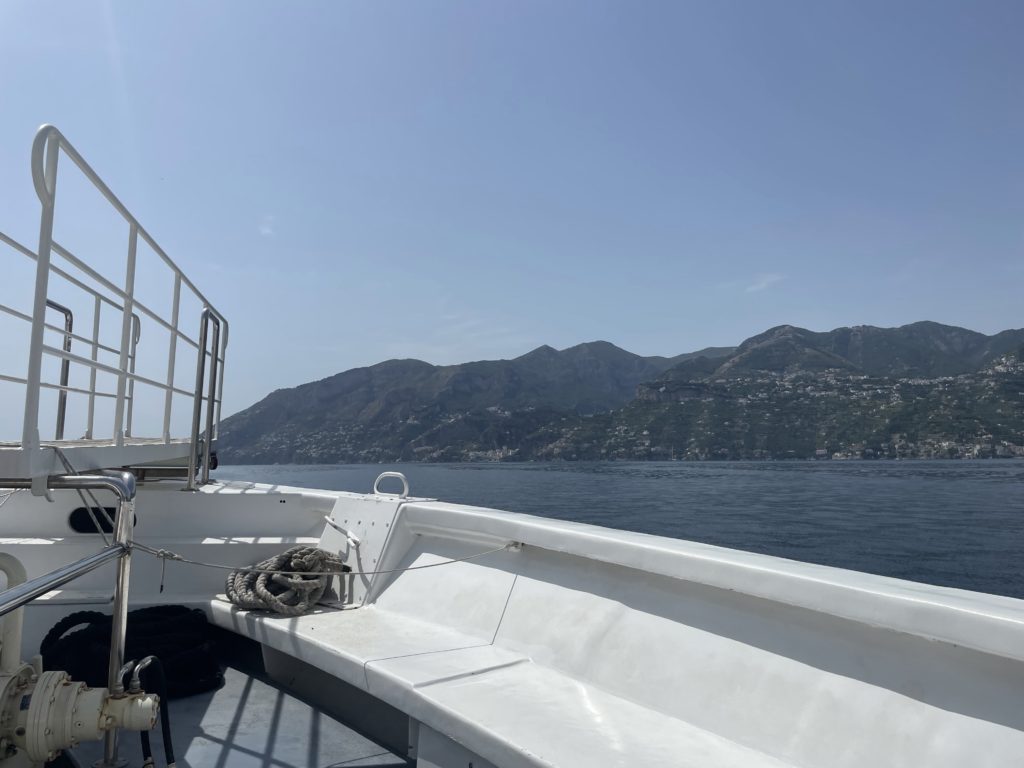
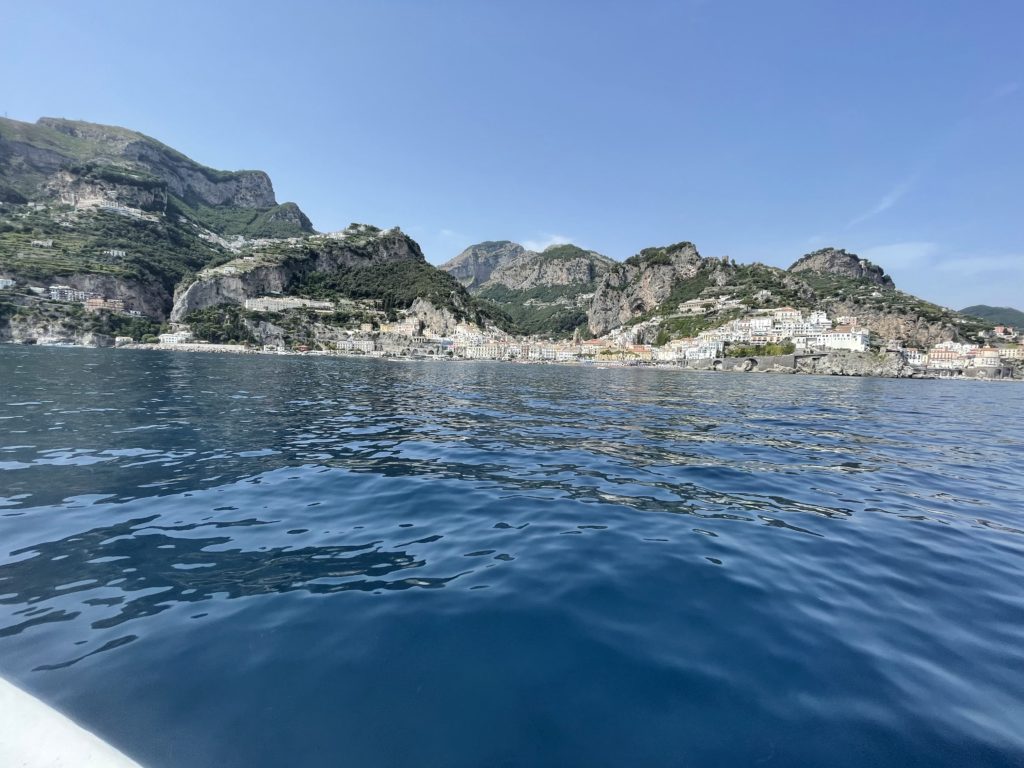
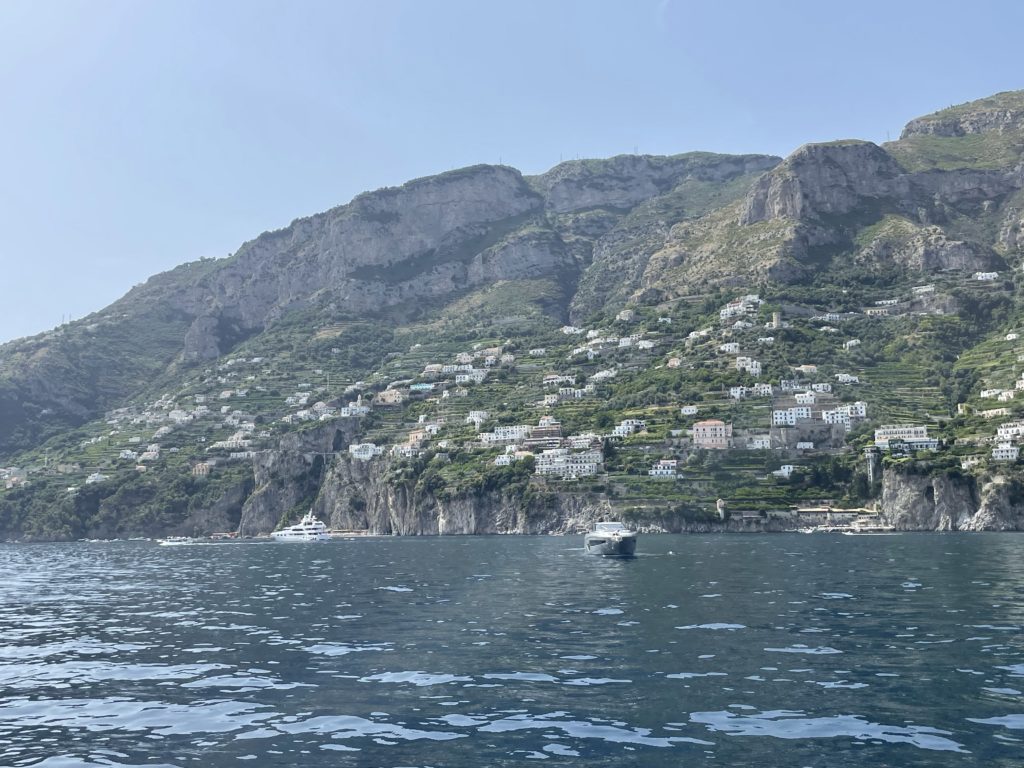
This entire region of Italy was gorgeous. The homes, roads, and shops were built directly into the mountains overlooking the Mediterranean. The buildings were often painted a bright color, and it was common to see lemon trees full of lemons.
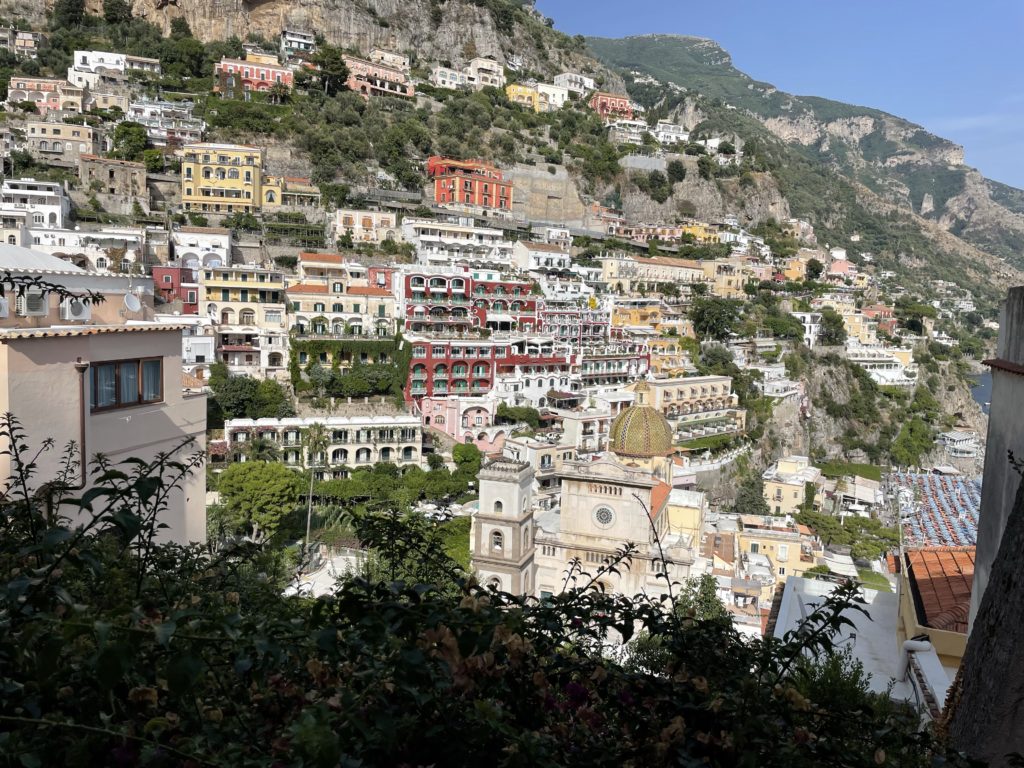
We loved strolling through the streets and looking out over the colorful houses into the bay where sailboats and luxury yachts were moored. We were reminded here just how far we had traveled in this trip. From the frigid below-freezing temperatures of Iceland to the humid warmth of the Italian coastline. What a journey! And how in the world can you pack for those temperature differences in one single backpack!? It was certainly a struggle, but we somehow managed to make it!
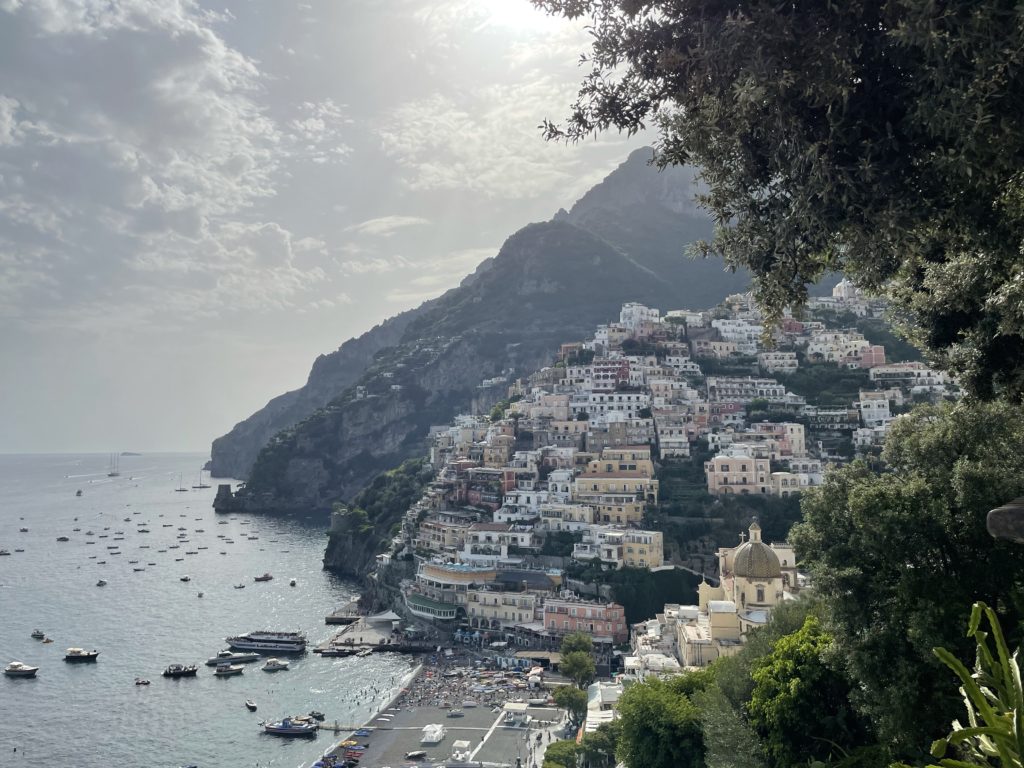
It was on the way back to Salerno from Positano that we decided to take a regional bus, thinking it would be a quick and easy way to hop back to our AirBnB. It’s here that I’ll break from my perspective and call in Lizzie to share her point of view on how that bus ride went:
Lizzie here! It was dark now and no more boats were running, so we couldn’t go back the way we came. We found a bus route and bought some bus tickets at a local tobacco shop. We took one bus from Positano to Amalfi. This bus was slammed and had people packed in like sardines. The bus driver almost didn’t let us on, but opened the side door where we had just enough space to step on the first step where the door could just close and we stood there for the duration of the drive smashed up against the glass door with little to hold onto as the bus driver zoomed around every twist and turn. We then transferred to yet another bus from Amalfi up to Maiori (another small town along the coast).
This bus did have enough seats for us, but the ride was equally as miserable. The roads were so curvy and I should also add that the bus drivers run a tight schedule and rarely slow down. It felt like we were on a fair ride. Now unfortunately, we don’t enjoy fair rides all too well. To set the scene, we were sitting close to the back, not much air flow, I was hunched over with my hands over my eyes as I tried not to throw up. We miraculously make it to Maiori without throwing up and spent about an hour there where we enjoyed the solid ground, the breeze, dipped our feet in the water and watched the sunset.
It was about 9:30pm now and we still had one more bus to take. Unfortunately, there was no other option but to take the bus back. I didn’t want to get back on that miserable twisty “ride”, but I also wanted to get back to our Airbnb and sleep. The bus only comes every hour and was scheduled to arrive soon. We stood at the bus stop as we saw it approach. The bus slowed down just enough for the bus driver to gesture “no” as he continued to drive on. The bus was full and refused to stop and pick up anymore passengers. We stood there with our tickets in hand shocked. There was only one more bus scheduled for that night at 10:30.
Disappointed, we sat back down on the bench and prayed the next one would let us on. We called a couple taxi drivers as a backup and got an 80€ quote vs a 4€ bus ticket. We would do that if we absolutely had to, but we decided to wait for an hour and take the chance the last bus would let us on.
There was a group of college girls from Ireland that also tried to get on the 9:30 bus. They sat at the stop with us waiting for the next bus to arrive. We had a great conversation with them as we waited. It turned out one of the girls from Dublin had some connections to North Carolina. Her mom went to Duke and her dad used to own an Irish pub in Charlotte. What a small world!
Finally, the 10:30 bus arrived and had enough room for all of us to get on! We were so glad the bus stopped, but now we had another hour and a half of misery. One of the Irish girls got sick and threw up. Luckily she came prepared with a brown bag and threw it away at the next stop before hopping back on.
I didn’t think I would make it. It was the most miserable ride I have ever been on! The original plan was to come back to Maiori the next day via bus and do a hike along some lemon groves. How wonderful that would have been, I told Graham there was no way I would ever get on another Amalfi coast bus.
We finally made it back to our Salerno AirBnB around midnight and fell fast asleep almost as soon as we walked in!
Salerno, Pompeii, and the Amalfi coasts were certainly highlights of our trip. We would definitely love to come back to this beautiful part of the Italian country one day, except next time we may just pass on the city bus!
